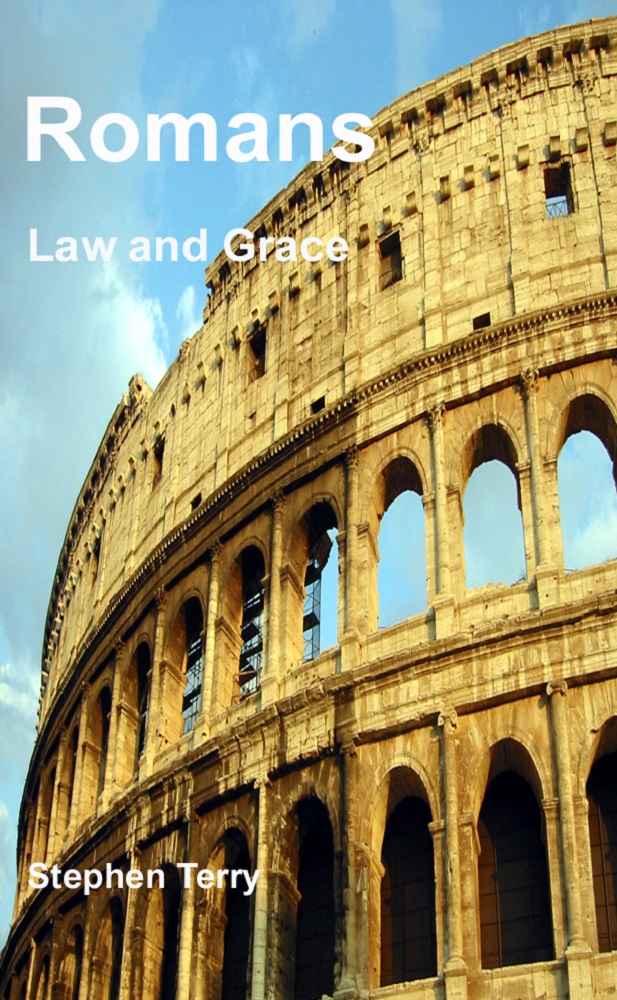The
Divinity of the Holy Spirit
Stephen
Terry
Commentary
for the January 21, 2017 Sabbath School Lesson
 “And you also were included in Christ
when you heard the message of truth, the gospel of your salvation. When you
believed, you were marked in him with a seal, the promised Holy Spirit, who is
a deposit guaranteeing our inheritance until the redemption of those who are
God’s possession—to the praise of his glory.” Ephesians 1:13-14, NIV
“And you also were included in Christ
when you heard the message of truth, the gospel of your salvation. When you
believed, you were marked in him with a seal, the promised Holy Spirit, who is
a deposit guaranteeing our inheritance until the redemption of those who are
God’s possession—to the praise of his glory.” Ephesians 1:13-14, NIV
Strange as it may seem there are those who dissent
within modern Christianity from the idea of a divine trinity. They claim that
since “God is One,”[i]
it is impossible for there to be any way there could be three personalities to
that oneness. Perhaps this arises from our limited perception of reality, but
there are examples of at least duality all around us. For instance we may have
one egg, but who has not cracked open an egg at different times to find two
yolks, rather than one, inside? A womb may also hold multiple fetuses at the
same time. In each case, if allowed to grow to maturity we will find more than
one individual being born. But they are independent and may go completely
different and even conflicting ways once they are born.
We also have the example of one person manifesting more
than one personality as can be seen in severe bi-polarism or even in
schizophrenia. But although these personalities all manifest in one individual,
they do not display at the same time. They also are often conflicting rather
than complementary personalities. But the fact that these things exist,
especially at the edges of what we would consider being mentally healthy are
teasers for the idea that it is the constraints we place upon our thoughts that
may be limiting our ability to understand the idea of multiple personalities,
all divine, within the being we call God. They are teasers because they only
hint at what may be beyond our spiritual understanding. They cannot provide the
answers themselves.
Legend has it that Saint Patrick explained the idea of
the full divinity of all three personalities of the godhead with a shamrock, pointing
out to his audience that all three leaves were equal yet were combined on one
stalk.[ii] Whether or not this
legend has any basis in fact, it falls short of fully explaining the Trinity
while nonetheless appealing to our limited perspective. John Wesley saw light
as a metaphor for understanding the Trinity. He wrote, “Here are three candles,
yet there is but one light. I explain this, and I will explain the Three-One
God.”[iii] Wesley may have come
closer with his example than Saint Patrick, for his sermon advances the idea
that it is as difficult to explain the Trinity as it is to explain the
properties of light. This may be the essence of the issue. By definition, the
ability to understand the very concept of a triune God may be beyond us. Our
mental capabilities are finite; we cannot even visualize an infinite set of
numbers. Instead we have to use a finite symbol, “∞,” to represent
infinity. But because we are limited to perceiving only the finite, our tools
are in many ways as limited as Saint Patrick’s. Nonetheless we can
theoretically understand that infinity exists and mathematically model it because
mathematics itself is based on symbols that represent things both real and
theoretical.
However, what happens when what we are addressing goes
beyond the available symbology? We are at a loss. We can neither define it nor
represent it. There is no mathematical symbol for omniscience, omnipotence, or omnipresence.
But words are symbols also, and the very existence of these words that
transcend human perception give witness to the possibility of such things much
as the symbol for infinity represents the idea that infinity is real. Actually
we have no idea whether or not anything is infinite. It is simply beyond our
ability to measure. So we accept the idea of an infinite universe on faith.
Currently we are only able to mathematically account for about 93 billion light
years of universe.[iv]
We have no idea what lies beyond that and theoretical implications, limited as
they are, are staggeringly mind bending. Assuming infinite possibilities, it
seems relatively obtuse to deny the possibility of the existence of God, an
idea that by definition is beyond definition. Is it not simply another concept
beyond our understanding that we have symbolized with a word? Of course our
symbol may fall far short of the symbol God himself offered when He said “I am!”
When He said those words that the Jews still hold to be
too sacred to utter, He chose a symbol that transcends all of time and space.
In essence He defined Himself as “being.” If He is such, then He is inseparable
from all that exists for all existence is derivative of such an entity. To
understand that idea better, we could substitute the words “He defined it” for “God
spoke” in Genesis, chapter one. In fact, everything, including mankind[v] was defined by God per
this account. Man then acting in God’s image has set about defining all that he
can see and measure.[vi]
But just as God expresses everything by His being, man expresses everything by
his being as well, limited though it may be. Because of those limitations, we
find it difficult to define God beyond the symbols we have used to represent
Him.
We symbolize Him as Father, Jesus the Son, and the Holy
Spirit. As long as we keep them separate, we can at least accept that these
beings can theoretically exist, but when we try to mash them all up into one,
we tend to get confused about what that looks like, let alone its implications
for everything. For some, who cannot handle the possibility, it may seem simpler
to deny divinity to everyone but God the Father. But in so doing, we deny the
omnipotence of the Father, for we in essence are saying God either cannot be or
is not what the Bible says He is. The Bible tells us that God the Father,[vii] the Holy Spirit[viii] and Jesus[ix] were all present at
Creation. Perhaps this is why God said “let us make man in our image.” To add further confusion to the issue, the word for God
in this chapter is in the plural form in the Hebrew. Whether that is idiosyncratic
or literal in intent is anyone’s guess. Scholars have debated the issue all the
way back into antiquity, and we are no closer to resolution of that issue than
they were. Nonetheless, whether the plural form has anything to do with the
idea of the Trinity or not, the idea may be challenged depending on
whether the same author who wrote Genesis, chapter one, also wrote Deuteronomy,
chapter six. But regardless of how that author may have understood the
manifestation of deity, the understanding in the New Testament is fairly clear,
and being written over a much shorter period of time, the New Testament may
also be more consistent as well. After all, the Old Testament writers had trouble
deciding whether it was God[x] or Satan[xi] who caused King David to
take a census of Israel.
The words of Jesus recorded by Matthew, give the Father,
the Son and the Holy Spirit equal billing in the baptismal invocation,[xii] which seems to indicate
that He saw all three as equal partners, each fully divine in their own right.
The Apostles apparently understood things the same way. Not only did they see
Jesus as divine as John indicated in the opening verses of his gospel,[xiii] but they saw the Holy
Spirit as equally divine. In Peter’s words to Ananias, he makes no distinction
between God and the Holy Spirit, telling Ananias that in lying to the Holy
Spirit, he was lying to God.[xiv] If we project this
understanding back into the Pentateuch and assume that the writer did
understand the concept of a triune God, we would have to consider the
possibility of an alternative meaning to what was written in Deuteronomy.
Perhaps it was written not as denial of the idea of the Trinity so much as a denial
of the panoply of deities that were worshipped by the Egyptians. These deities
were confronted and defeated by the God of Israel through the imposition of the
Ten Plagues that challenged the separate areas of their authority. The God of
Israel had authority over every area and Trinity or not, His authority was not
compartmentalized like the Egyptian gods. It was unified and complete. Whether
it is God the Father, Jesus, or the Holy Spirit, each is fully divine with all
authority, omnipotent, omniscient, and fully endowed with all the same power of
the other two, underived and intrinsic. In that, God is truly unique.
